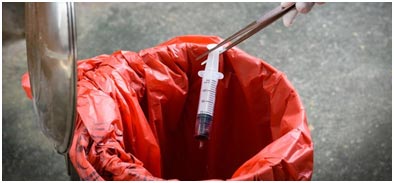|
Healthcare
Plastics Recycling Project: A Success
A collaborative multi-hospital
recycling project between the Healthcare Plastics Recycling Council (HPRC) and
the Plastics Industry Association (PLASTICS) has been completed in the Chicago
market.

The project aimed to address the
issues surrounding the use and recycling of plastics used in the healthcare
industry. HPRC and Plastics aimed to introduce a viable recycling model for
healthcare plastics, the focus being on non-infectious plastic packaging and
products collected from clinical areas of the hospitals.
Plastic materials in hospitals
are currently difficult to recycle in an economically viable way due to the
material failing to represent enough value to attract the attention of
recyclers. The project brought together multiple hospitals in an attempt to
overcome this issue.
Plastics primarily from main
operating rooms and ambulatory surgery centers were collected and then
transported by waste haulers to material recovery facilities (MRFs) for
processing, or transferred to specialised plastics recyclers.
The project was a success in many
areas, such as defining the relative quantities of material types and
understanding the complexity of sorting the materials once collectively amassed.
The highest volume of material
collected was sterilisation wrap and as such, the material was evaluated as a
viable substitute or supplement for virgin resins in product manufacturing.
Other packaging materials such as film plastics, as well as rigid plastic
packaging were also collected.
The team were also successful in
testing the potential to demonstrate value through energy conversion and
chemical recycling, showing that value can still be realised through other
recovery processes.
Chris Rogers, HPRC project
manager said: “This project provided valuable insights into the realities of
implementing plastics recycling programs in clinical healthcare settings. What
we learned is that collection of plastics must be made simple for clinical staff
in order to be effective. Detailed sorting at the point of generation is too
complex and a distant priority from clinician’s primary focus of ensuring
positive patient outcomes. It’s also important to remember that behavioural
change around recycling can be a slow process, one that takes constant
reinforcement over time.”
Kim Holmes senior director of
recycling and diversion at PLASTICS said: “In addition to testing the recovery
and mechanical recycling of healthcare plastics, we were also able to explore
alternative pathways of chemical recycling and conversion to fuel products with
our technology partners. Proving the value of these hospital plastics in the
conversion process was an exciting dimension of this project and underscores the
importance of adding non-mechanical recovery technologies to our resource
management tool kit.”
Participating hospitals included
Advocate Illinois Masonic Medical Centre, and NorthShore University
HealthSystem’s Evanston, Skokie and Glenbrook Hospitals.
(Ref :
http://www.medicalplasticsnews.com/news/healthcareplastics-recycling-project-is-a-success/
)
Trends Pushing
Solid Growth in Global Market for Medical Plastics
New proprietary research by BCC
Research reveals that long-term trends in the global healthcare industry are
boosting the medical plastics market. Among its key drivers, aging populations
and the increasing use of minimally invasive surgical techniques are pushing the
global medical plastics market to reach about 17.2 billion pounds in 2021, up
from 12.7 billion pounds in 2016.
Plastics usage in medical devices
has been growing faster than the gross domestic product (GDP) of the U.S. and
other major markets. The aging U.S. population, ongoing cost-reduction pressures
in the healthcare field, advances in polymer performance, and environmental
issues surrounding disposable and non-disposable medical devices are key factors
in the market’s 6.2% CAGR.
Research Highlights
-
The demand for lighter materials
is rising as healthcare activities move to locations outside clinical and
hospital settings
-
The shift toward using disposable medical products, especially single–use
versions packaged and placed in kits, continues to
expand.
-
Other market drivers include advances in polymer performance and the
introduction of new and lifesaving devices. “Commodity thermoplastics dominate
the global market with around 60% of total volume”. requirements, pricing,
environmental and regulatory issues.”
.Emerging Healthcare Trends
Shaping the Plastics Market Long-term trends in the global healthcare industry
are favorable to the continued growth of the medical plastics market,
particularly aging populations in most major markets, which drive increased
healthcare spending.
“One key trend that should
benefit the market is healthcare provision in settings such as the home or
outpatient clinics,” Fitzgerald says. “The movement of healthcare activities to
less costly locations have increased the need for lighter materials, especially
for housings. Thus, home healthcare and other out of-hospital treatment and
service systems require prepackaged diagnostic and therapeutic kits that can be
used on site and discarded. Most of these kits are plastic, as are the package
contents.”
( Ref :
https://globenewswire.com/news-release/2017/06/13/1018090/0/en/Trends-Pushing-Solid-Growth-in-Global-Marketfor-Medical-Plastics.html
).
* * * * *
|

